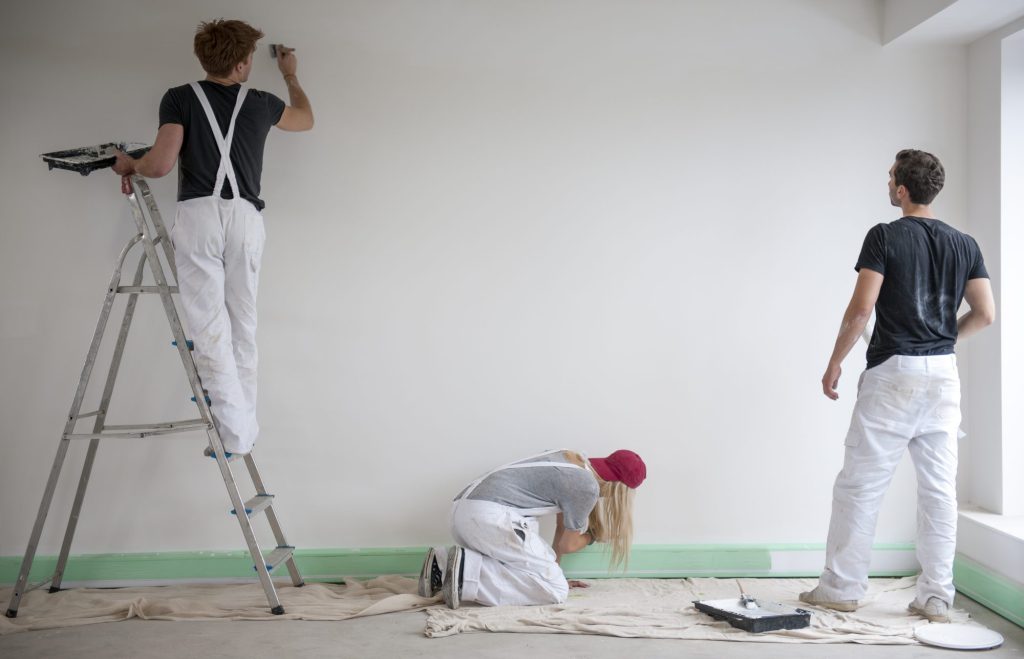Faux concrete walls are an inexpensive and straightforward method to dress up your home. The method uses the overlaying of concrete with a stencil that transforms plain plaster into brick-like elements.
GBS Penetrating Sealer protects substrates by filling gaps in molecules. It’s therefore a better choice for substrates such as brick, stucco or concrete.
Sealing
If you’d like the look of concrete walls, but do not have the funds or time for the construction, look into using fake wall panels. These panels are easy to maintain and lightweight, featuring polyurethane-coated surfaces. Installation isn’t required that’s why you’ll save costs on installation by a professional and can transform your room by yourself.
It is also possible to achieve an appearance similar to a concrete wall with paint or drywall compound. They are less expensive as concrete resurfacers. However they do not offer similar texture.
It’s a straightforward application of a concrete-look interior wall covering that creates a modern metropolitan ambience. It’s a great alternative to cement wall paint as well as the best thing to real concrete that is in raw. Application is easy as simply humidifying it with the help of a sponge. (Work for 20-30 square feet at any set moment). When you have applied LOFT Raw, you can use trowels made of stainless steel to smooth out the surface, creating a “raw” surface.
Best Sealant for Faux Concrete
The ideal choice to seal your fake concrete cement paint walls is to use a penetrating sealer, such as Enhancer Shield, which is accessible in both water and solvent-based formulations. It works by saturating the concrete’s surface, which allows it to repel moisture and de-icing salts with no change in texture or creating damage. This is an ideal choice for outdoor surfaces as it will greatly reduce the risk of freeze-thaw or spalling damage, as well as prevent mildew growth and staining.

For use, scrape away any existing peeling paint, then sand or etch the concrete if needed (it’s generally not) then rinse, and allow to dry fully. Paint two coats using a 1/4-inch nap roll brush, pump sprayer, or pump. Then wait for 10 minutes between. It will be dry to the touch within 4 hours. This will be ready for taking a walk or driving within an hour and completely waterproof in 72 hours. It’s a very durable and inexpensive option for protecting the concrete surfaces you have.
Faux Concrete Wall Maintenance
The faux concrete panels will make your home appear more contemporary appearance. These wall panels are great to those who aren’t willing to shell out money or time on installing authentic concrete walls, but wish to have the appearance. The panels have also been evaluated as being fireproof and weather resistant.
Contrary to the real thing, faux concrete panels aren’t required to be put into molds, and they are much easier to wash. They’re created with polyurethane. This is strong and durable, able to stand up to scratching, abrasion, and staining. To ensure that these panels look brand new, simply wipe the surface clean using gentle cloth.
The pillars section of the wall to the west is being renewed with cement and will fix numerous holes and the areas that have been eroded. It should take about two days.
Protecting Faux Concrete Surfaces
Concrete is an extremely durable solid, dependable and highly durable material, which is used in a range of industrial uses. It is however not impervious to damage, and if it isn’t treated with appropriate care and security industrial concrete surfaces may very quickly be damaged by environmental pollutants.
Concrete surfaces need to be guarded against water damage, no matter if they’re used as counters, walls or floors. There are a variety of tried and tested methods to shield concrete surfaces. You should consult with a concrete protector expert about the ideal item for the environment you live in.
Decorative painting can add a dramatic effect to any simple concrete floor. The faux finisher Kim Longoa transforms an outdoor concrete patio into an inviting living space with carpets employing adhesive stencils and applying stain. Kim Longoa’s faux finishing also used stenciling to make an edging of slate that extends over pavers and features a lily-pond.
